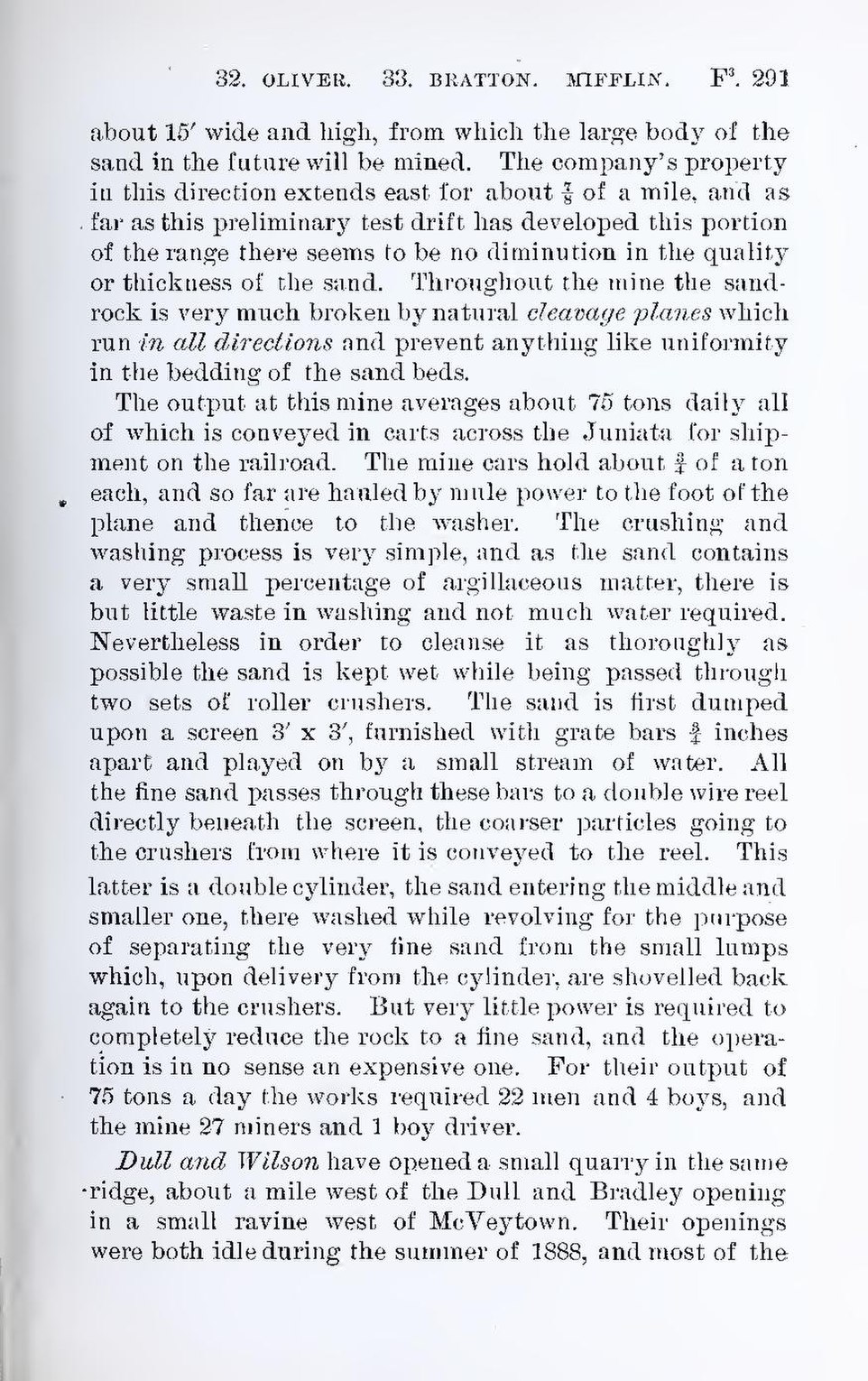about 15′ wide and high, from which the large body of the sand in the future will be mined. The company’s property in this direction extends east for about ⅞ of a mile, and as far as this preliminary test drift has developed this portion of the range there seems to be no diminution in the quality or thickness of the sand. Throughout the mine the sand-rock is very much broken by natural cleavage planes which run in all directions and prevent anything like uniformity in the bedding of the sand beds.
The output at this mine averages about 75 tons daily all of which is conveyed in carts across the Juniata for shipment on the railroad. The mine cars hold about ¾ of a ton each, and so far are hauled by mule power to the foot of the plane and thence to the washer. The crushing and washing process is very simple, and as the sand contains a very small percentage of argillaceous matter, there is but little waste in washing and not much water required. Nevertheless in order to cleanse it as thoroughly as possible the sand is kept wet while being passed through two sets of roller crushers. The sand is first dumped upon a screen 3′ × 3′, furnished with grate bars ¾ inches apart and played on by a small stream of water. All the fine sand passes through these bars to a double wire reel directly beneath the screen, the coarser particles going to the crushers from where it is conveyed to the reel. This latter is a double cylinder, the sand entering the middle and smaller one, there washed while revolving for the purpose of separating the very fine sand from the small lumps which, upon delivery from the cylinder, are shovelled back again to the crushers. But very little power is required to completely reduce the rock to a fine sand, and the operation is in no sense an expensive one. For their output of 75 tons a day the works required 22 men and 4 boys, and the mine 27 miners and 1 boy driver.
Dull and Wilson have opened a small quarry in the same ridge, about a mile west of the Dull and Bradley opening in a small ravine west of McVeytown. Their openings were both idle during the summer of 1888, and most of the
